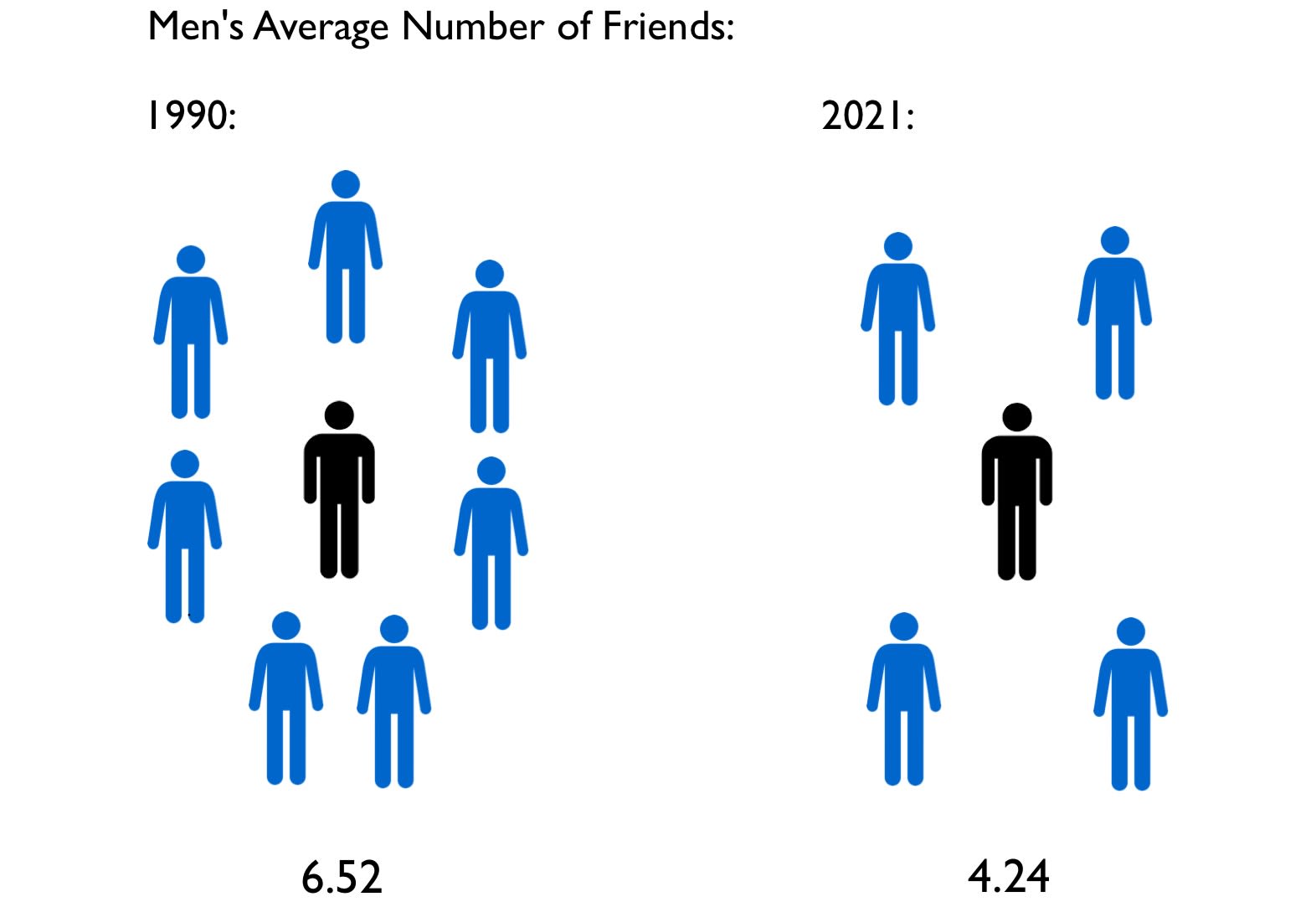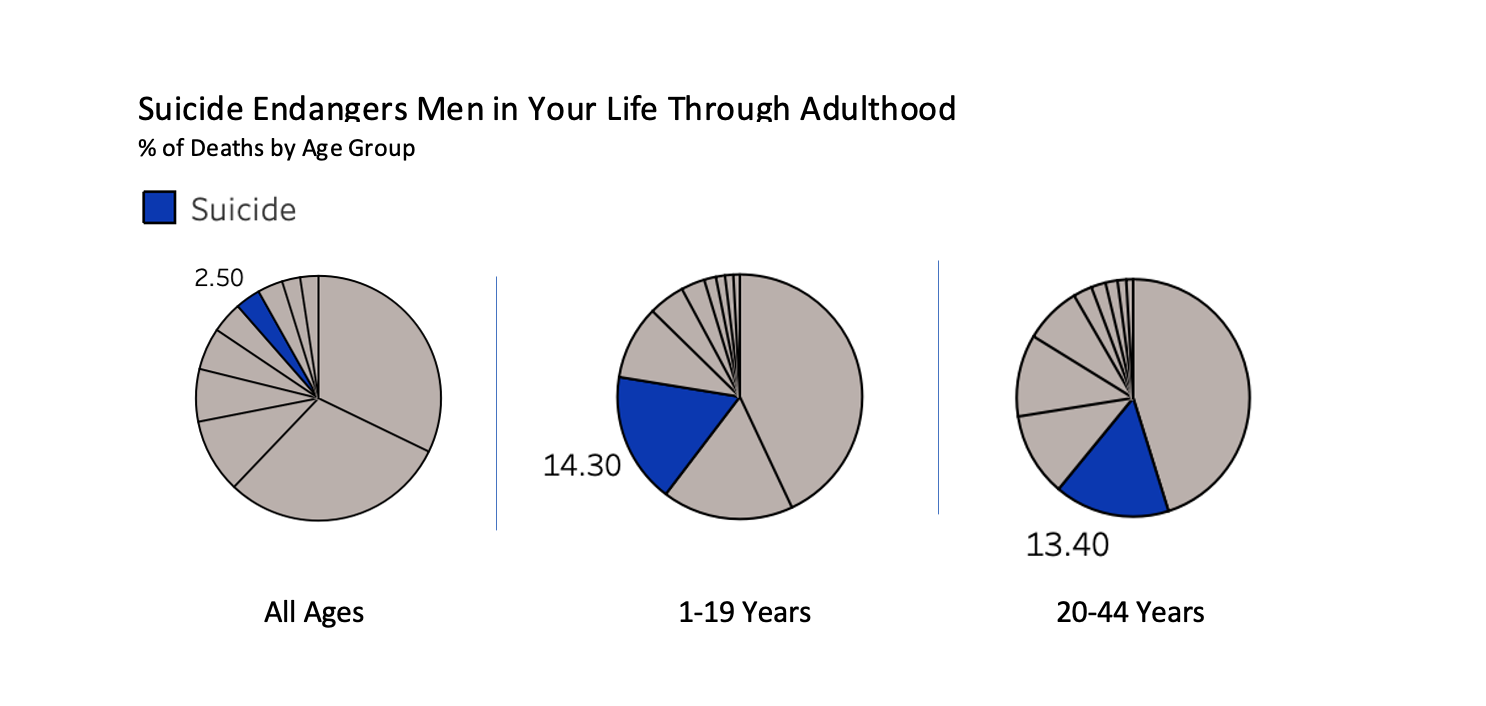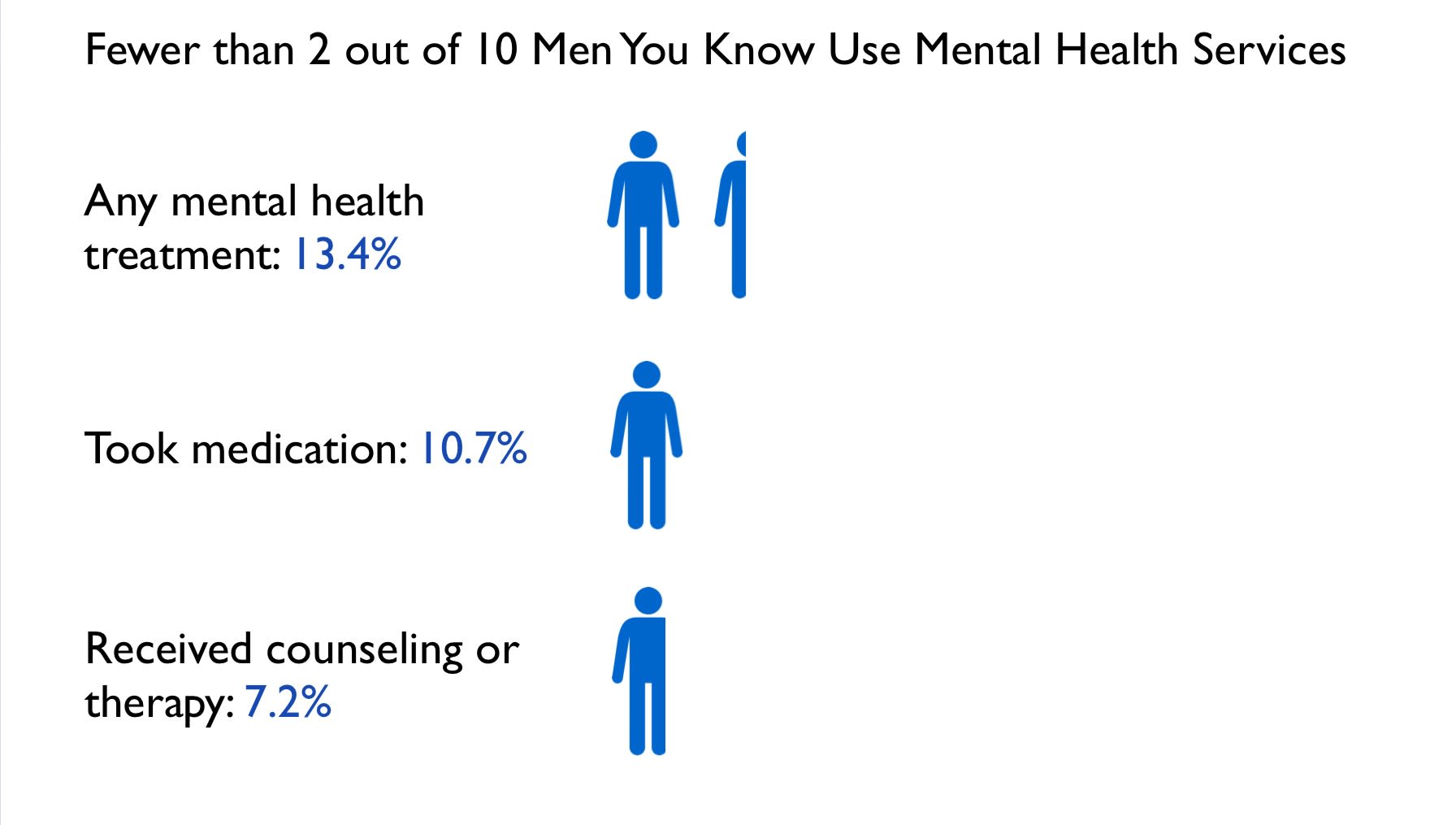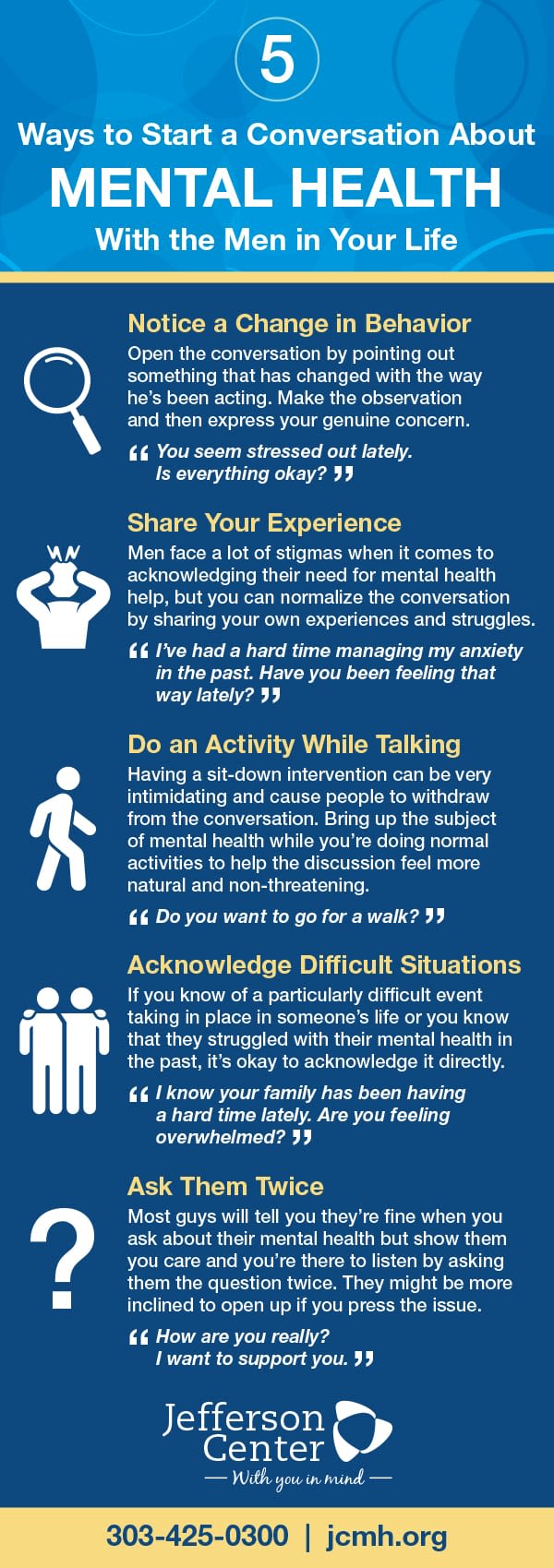Men and Mental Health
The story surrounding men's struggle with mental health and how you can help the men in your lives

Adolescence into Adulthood
The story of men's mental health, and the associated resources, are often directed at men. However, this particularly story will be aimed at friends and family members of men. Everyone wants to be a better ally, and I hope this story introduces some key facts and conversation starters for you and the men in your life.
Everyone knows a man, whether they want to or not. Fathers, brothers, friends, classmates, colleagues. Some of you viewing this may even be men yourselves! The number of men in the world slightly surpass the number of women - out of 1,000 people you meet, 504 are likely to be male.
There has been a long pattern in American culture to portray young men as boisterous and friendly. Whether it be a sports team or a fraternity, pop culture in the United States paints a picture of wide social groups and strong friendships amongst men. However, reality rarely reflects pop culture.

Over the past 20 years, men have experienced a significant drop off in reported number of friends. If this pattern continues, the average male will report having just 1 friend by 2050. Furthermore, these few friendships men are likely to offer significantly less emotional support than friendships between women.



Outcomes
This recognized drop in men's socialization over the past 40 years has real health impacts, not just mentally but physically.
The ties between mental and physical are just beginning to be studied in depth. However, the most stark and real health repercussion resulting from shrinking social circles is evidenced through CDC mortality statistics.
The figure to the below shows mortality statistics for men in 2021. The key to understanding the effects of shrinking social circles is to not look mortality aggregate figures. The key drivers of mortality - cancer, heart disease, accidents - all come from the older age brackets which are able to hide key patterns in the data.


When separated out, the stark reality is obvious. Suicide is the #3 killer of men aged 1-19 years, and the #2 killer of men aged 20-44. Everyone reading this can understand and appreciate how much of life occurs between 1 and 45. These key moments - middle school, high school, early adulthood, late adulthood, parenthood, etc. - are all occurring while social circles shrink, mental health deteriorates, and help seems few and far between.
As men (and women) combat the struggles brought up by life, there is a real need for adequate and affordable mental health services. The United States struggles in this area compared to other developed countries, and this certainly drives the statistics shown above. While usage of mental health services has been rising over time, men are showing the slowest adoption rates.

However, the usage rates of mental health services of men above the age of 18 in the United States is not equal across racial groups. White males have nearly twice the usage rates across all three categories than their Black and Hispanic counterparts.
Hope
There are ways you can help.
Major efforts have been made in the past decade to lower the stigma surrounding mental health. Be part of the solution by:
- Knowing the facts
- Minding your attitude and behavior
- Choosing your words carefully
- Including everyone
If you are experiencing a mental health crisis, please call SAMHSA treatment referral line at 1-877-SAMHSA7 (1-877-726-4727).
Join in Men's Mental Health Awareness Month in June.
Consider donating to men's support groups in your local area.
Practice having conversations with the men in your life.
Images: Unsplash.com

